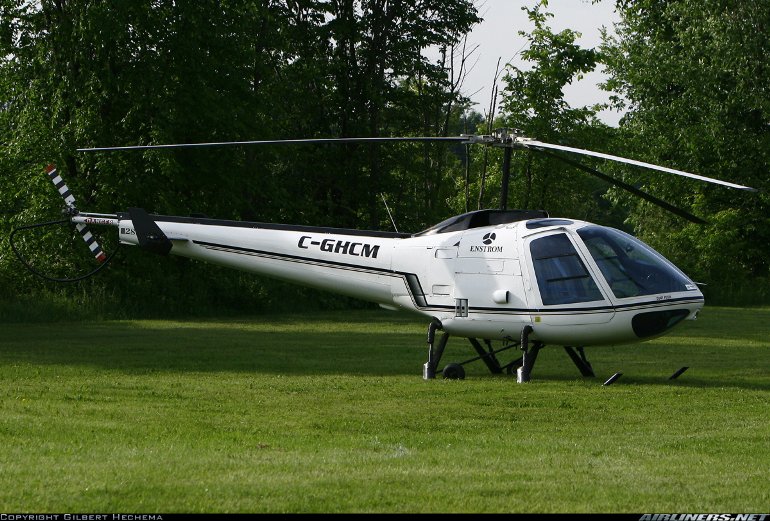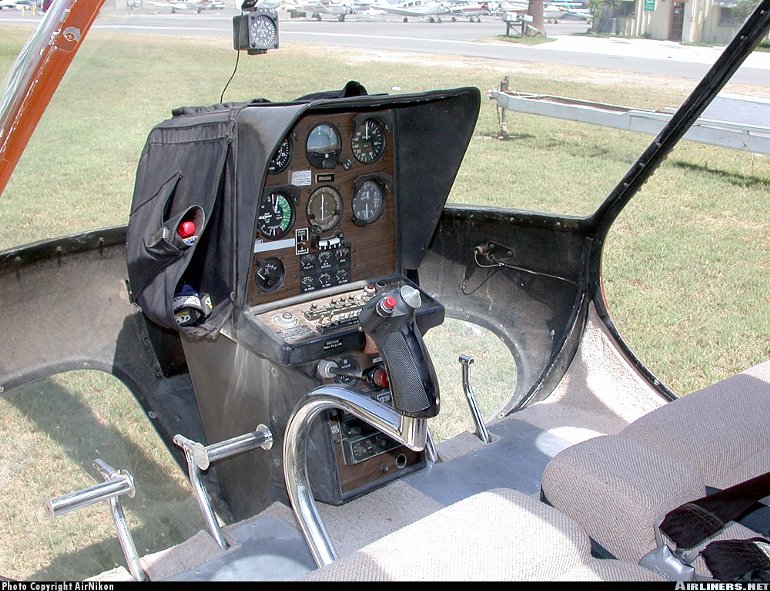Aircraft Technical Data
Enstrom F-28/280/480


| Details | |
| Country of Origin | United States of America |
| Type | Three and five seat light helicopters |
| History | This long running line of three, four and five place light helicopters dates back to the late 1950s and remains in production. The Enstrom Helicopter Corporation was first formed in 1959, and the three place F-28 was its first product. The first F-28 prototype made its maiden flight on November 12 1960, with the production prototype of the F-28 flying in May 1962. Since that time numerous developments of the basic design have been built. These include the F-28A which appeared in 1968; the T-28 powered by a Garrett AiResearch TSE36-1 turbine engine, which flew in 1968, but was not taken into production, the Model 280 Shark from 1973, an improved version with a reprofiled airframe which supplemented the F-28A in production; and the turbocharged F-28C and 280C, which were certificated in 1975. The prototype for the Allison (now Rolls-Royce) 250 turboshaft powered 480 five seater and TH-28 three seat trainer first flew in 1989 after a proof of concept 280FX testbed powered by an Allison 250-C20W began test flying the previous year. The 480 was certificated in June 1993, the TH-28, which Enstrom unsuccessfully entered into a recent US Army competition for a new pilot training helicopter, was certificated in 1992 and is aimed at training and light patrol work. Current Enstrom production models are the F-28F Falcon which first appeared in 1981; the FLIR pod equipped F-28F-P Sentinel which is optimised for police work; the three seat 280FX Shark which was certificated in early 1988; and the turbine powered 480 and TH-28. |
| Powerplants | F-28A - One 155kW (205hp) Lycoming HIO-360-C1B flat four piston engine driving a three blade main rotor and two blade tail rotor. 280FX - One 170kW (225hp) Textron Lycoming HIO-360-F1AD with Rotomaster turbocharger. 480 - One 215kW (285shp) takeoff rated Allison 250-C20W turboshaft. |
| Performance | F-28A - Max cruising speed 161km/h (87kt). Initial rate of climb 950ft/min. Service ceiling 12,000ft. Hovering ceiling in ground effect 5600ft. Range with max fuel 380km (205nm). 280FX - Max cruising speed 189km/h (102kt), economical cruising speed 172km/h (93kt). Initial rate of climb 1450ft/min. Certificated ceiling 12,000ft. Hovering ceiling out of ground effect 8700ft. Range with max fuel and no reserves 483km (260nm). 480 - Cruising speed 211km/h (114kt) at 1293kg (2850lb). Initial rate of climb 1500ft/min. Service ceiling 13,000ft. Hovering ceiling out of ground effect 12,000ft. Max range 806km (435nm). |
| Weights | F-28A - Empty 657kg (1450lb), max takeoff 975kg (2150lb). 280FX - Empty equipped 719kg (1585lb), max takeoff 1179kg (2600lb). 480 - Empty 760kg (1675lb), max takeoff 1292kg (2850lb). |
| Dimensions | F-28A - Main rotor diameter 9.75m (32ft 0in), length overall 8.94m (29ft 4in), fuselage length 8.56m (28ft 1in), height to top of rotor hub 2.79m (9ft 2in). Main rotor disc area 74.7m2 (804sq ft). 280FX - Same except for length overall 8.92m (29ft 3in). 480 - Main rotor diameter 9.75m (32ft 0in), fuselage length 9.09m (29ft 10in), height to main rotor hub 2.92m (9ft 7in). |
| Capacity | Three seats in the F-28 and 280, five seats in 480. Can also be fitted with agricultural spraying gear. |
| Production | Production of all versions exceeds 1000. Approximately 45 480s built. |
| Related Links | Enstrom F-28/280/480 |
The backbone of this section is from the The International Directory of Civil Aircraft by Gerard Frawley and used with permission. To get your own copy of the book click here. |
|








